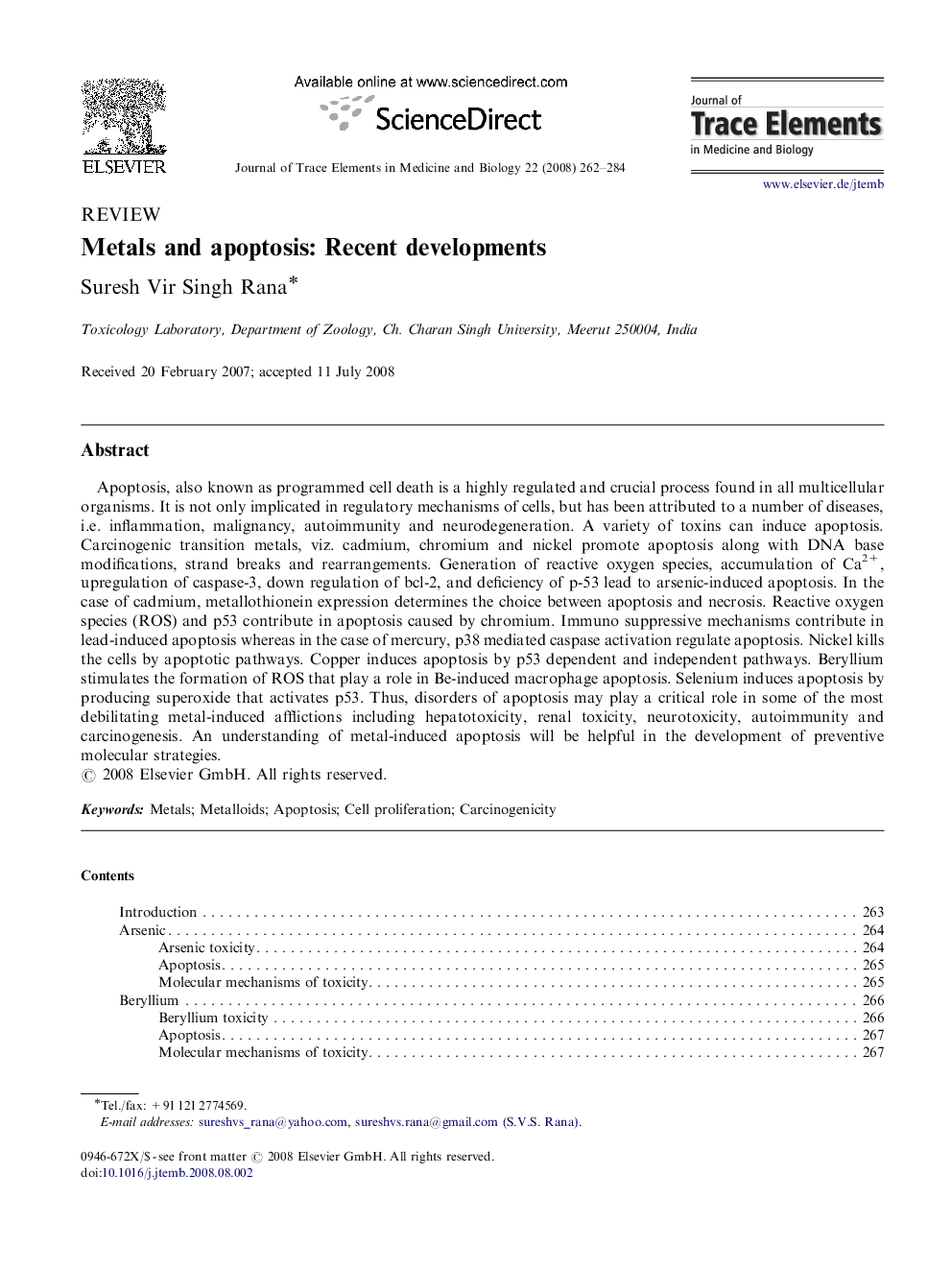| کد مقاله | کد نشریه | سال انتشار | مقاله انگلیسی | نسخه تمام متن |
|---|---|---|---|---|
| 1226722 | 968320 | 2008 | 23 صفحه PDF | دانلود رایگان |

Apoptosis, also known as programmed cell death is a highly regulated and crucial process found in all multicellular organisms. It is not only implicated in regulatory mechanisms of cells, but has been attributed to a number of diseases, i.e. inflammation, malignancy, autoimmunity and neurodegeneration. A variety of toxins can induce apoptosis. Carcinogenic transition metals, viz. cadmium, chromium and nickel promote apoptosis along with DNA base modifications, strand breaks and rearrangements. Generation of reactive oxygen species, accumulation of Ca2+, upregulation of caspase-3, down regulation of bcl-2, and deficiency of p-53 lead to arsenic-induced apoptosis. In the case of cadmium, metallothionein expression determines the choice between apoptosis and necrosis. Reactive oxygen species (ROS) and p53 contribute in apoptosis caused by chromium. Immuno suppressive mechanisms contribute in lead-induced apoptosis whereas in the case of mercury, p38 mediated caspase activation regulate apoptosis. Nickel kills the cells by apoptotic pathways. Copper induces apoptosis by p53 dependent and independent pathways. Beryllium stimulates the formation of ROS that play a role in Be-induced macrophage apoptosis. Selenium induces apoptosis by producing superoxide that activates p53. Thus, disorders of apoptosis may play a critical role in some of the most debilitating metal-induced afflictions including hepatotoxicity, renal toxicity, neurotoxicity, autoimmunity and carcinogenesis. An understanding of metal-induced apoptosis will be helpful in the development of preventive molecular strategies.
Journal: Journal of Trace Elements in Medicine and Biology - Volume 22, Issue 4, November 2008, Pages 262–284